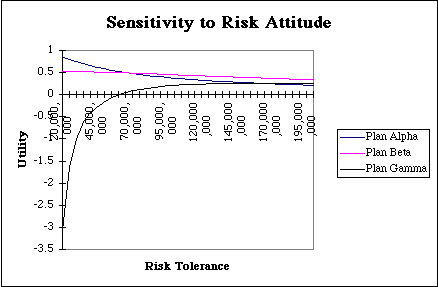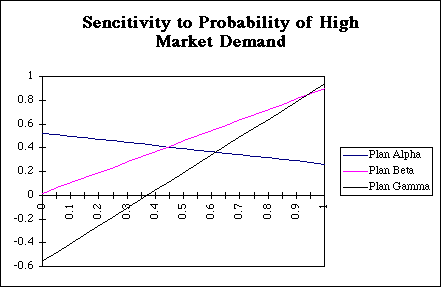
Sensitivity analysis helps us to gain more insight into the decision problem. Here we can analyze how the change in one or more parameters will affect the value of each alternative and our recommendation. For example, we can answer the question: "Will our recommendation change if our belief about the future interest rate changes?" This is another chance for us to check the robustness of the recommendation with respect to our initial assessments and assumptions.
To check this, we vary the risk tolerance and plot the corresponding
utility for each alternative. As we increase the risk tolerance, the certain
equivalents of each alternative approach the expected value for that alternative.
When the risk tolerance is very large the company cares very little
about the risk involved - it becomes risk-neutral. When the risk
tolerance is low (less than $65M), the company will be reluctant to take
any risk and will value the least risky alternative - plan Alpha - the
highest. For risk tolerance above $65M the company will be willing
to take more risky deals and will value plan Beta the highest. Note
that no matter how high the risk tolerance is, the company will not prefer
plan Gamma to plan Beta.

The conclusion here is that as long as we believe that the risk
tolerance is above $65 million, the recommended alternative is plan Beta.
If the probability of high market success is below 45%, then plan Alpha
will have the highest value. This information signals that we should
investigate our initial assessment on the probability of high market
success. If our assessment is off by as little as 5%, plan Gamma
may not be the best alternative. This point will be discussed further
in the following section.

|
|
|